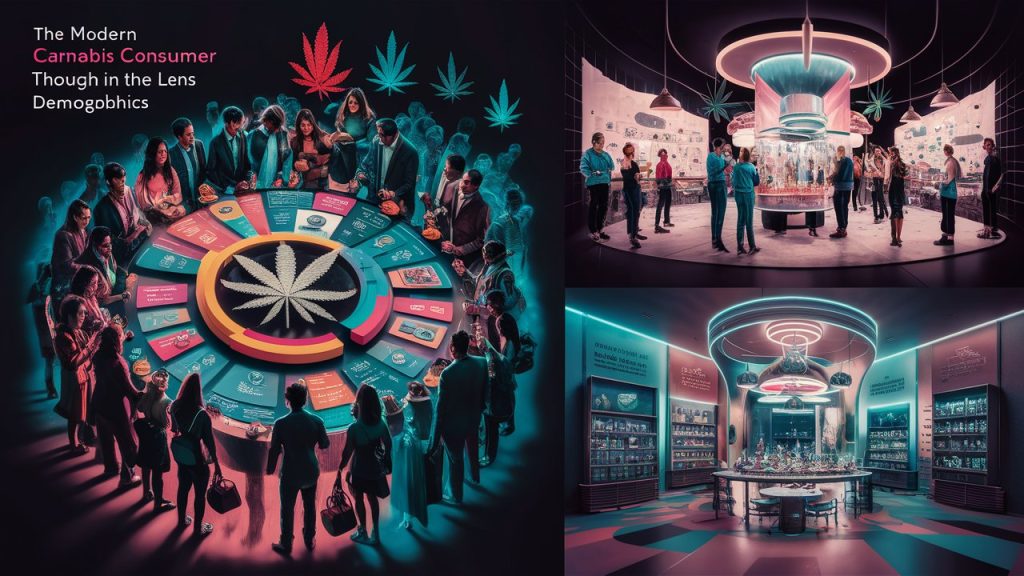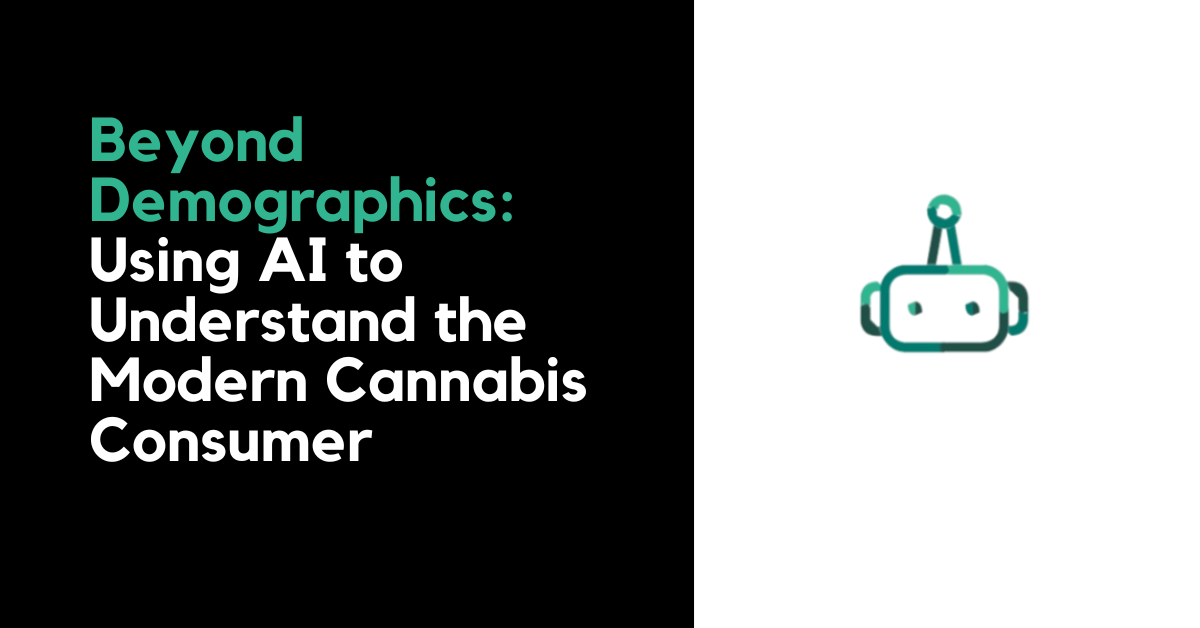- My 5am Ritual: How Waking Up Early Unlocked My Productivity Superpowers – June 15, 2024
- Beyond Demographics: Using AI to Understand the Modern Cannabis Consumer – April 27, 2024
- Blazing Trails, Hitting Roadblocks: A Cannabis Tech CEO’s Story – March 22, 2024
Beyond Demographics: Using AI to Understand the Modern Cannabis Consumer
For too long, businesses have relied heavily on broad demographic data to understand their customers. While knowing age, gender, location, and income can provide some Value, it falls far short of a truly comprehensive consumer understanding. The modern, diverse cannabis consumer demands a more nuanced approach.
The Limitations of Demographics Alone
 Simple demographics are incapable of explaining the “why” behind cannabis purchasing decisions. They make assumptions that all consumers within a demographic segment are motivated by the same factors. But the reality is that attitudes, values, lifestyles, and
Simple demographics are incapable of explaining the “why” behind cannabis purchasing decisions. They make assumptions that all consumers within a demographic segment are motivated by the same factors. But the reality is that attitudes, values, lifestyles, and personal experiences shape consumer behavior as much or more than demographics.
The truth is that a 30-year-old male consumer with a white-collar background could be motivated by entirely different reasons than another 30-year-old male from a justice-impacted background. One may prioritize wellness and view cannabis as a natural treatment, while the other views it similarly to alcohol – a vice for recreation and new experiences. Demographics alone cannot delineate between those divergent mindsets.
Beyond motivations, cannabis attitudes and preferences are shifting rapidly as the industry grows and matures. Consumers who may have been driven by novelty a few years ago are becoming more educated and developing defined product and brand tastes. Relying on stale demographic assumptions will leave cannabis dispensaries and brands behind the curve.
The Rise of BakedBot AI for Deep Consumer Intelligence
This is where artificial intelligence can deliver the psychographic and behavioral insights needed to understand the multifaceted cannabis consumer. By applying our AI agents and machine learning tech to your POS and CRM data, you can uncover the deeper motivations, mindsets, lifestyles, and preferences behind purchases.


Psychographic AI Segmentation: Understanding “Why”
Psychographic segmentation using AI goes beyond dry demographics to analyze the attitudes, values, interests, opinions, and personalities that influence consumer behavior. Our psychographic AI models can identify distinct segments like:
Wellness-Focused: Motivated primarily by therapeutic benefits for conditions like insomnia, anxiety, or chronic pain. This segment values natural, low-intervention products, and is driven by health over recreation. Example profile: A middle-aged woman who uses CBD tinctures to help manage arthritis symptoms.
Recreationalists: Views cannabis primarily as a social lubricant akin to alcohol. This segment desires new experiences, is driven by trendiness and FOMO, and places a lower priority on health benefits. Example profile: A young urban dweller who brings cannabis products to parties and social gatherings.
Connoisseurs: Highly knowledgeable about strains, terpenes, growing techniques, and other cannabis intricacies. This discerning segment is hyperfocused on quality over novelty or price. Example profile: A middle-aged man part of a local cannabis grow club who only purchases craft products.


InData Lab’s Travis Dillard added,
When discussing the benefits of using AI in marketing, the main advantage marketers highlight is a great user experience. Improved customer satisfaction is, without a doubt, imperative for a successful business and directly correlates to increasing company profits. Seamless communication with brands, hyper-personalized interactions, and instant support are all important building blocks of a beneficial customer journey.
Behavioral AI Segmentation: Understanding Actions
While psychographics help us to understand motivations, analyzing observed behavioral data allows us to concretely map preferences, purchase patterns, and product affinities among customers. By feeding transactional, engagement, and product preference data into machine learning models, we can identify distinct clusters of consumer behavior.
Types of behavioral data that can feed our algorithms include:
– Purchase patterns (frequency, basket composition, fulfillment method)
– Engagement (social media, online community participation, reviews/ratings)
– Product preferences (strains, cannabinoid profiles, formats, brands)
– Website/app interactions (content consumption, features used, paths)
Our clustering algorithms identify distinct behavioral segments by recognizing patterns and concentrations in the data. 

Partner with BakedBot AI – A Social Equity Cannabis Martech Pioneer
The true power emerges when we overlay the “what” of behavioral segmentation with the “why” of psychographic segmentation. We may find that the vaporizer/concentrates enthusiasts are overwhelmingly represented in the connoisseur psychographic, enticed by the ability to appreciate nuanced terpenes and advanced ingestion methods. Combining both psychographic and behavioral data allows us to assemble rich unified consumer profiles.
As a social equity company, BakedBot AI is committed to empowering cannabis entrepreneurs and bringing inclusive innovation to the industry. Our autonomous marketing solution drives operational efficiency by reducing marketing costs through AI-powered content automation and hyper-personalization at scale.
Join our pilot program to experience first-hand how BakedBot’s autonomous agents can revolutionize your marketing while leveling the playing field. Or invest in the future of autonomous cannabis marketing by becoming an early-stage partner. Together, we can pave the way for the next wave of equitable martech disruption.
Signup here or Reach out on LinkedIn here:
-Martez


